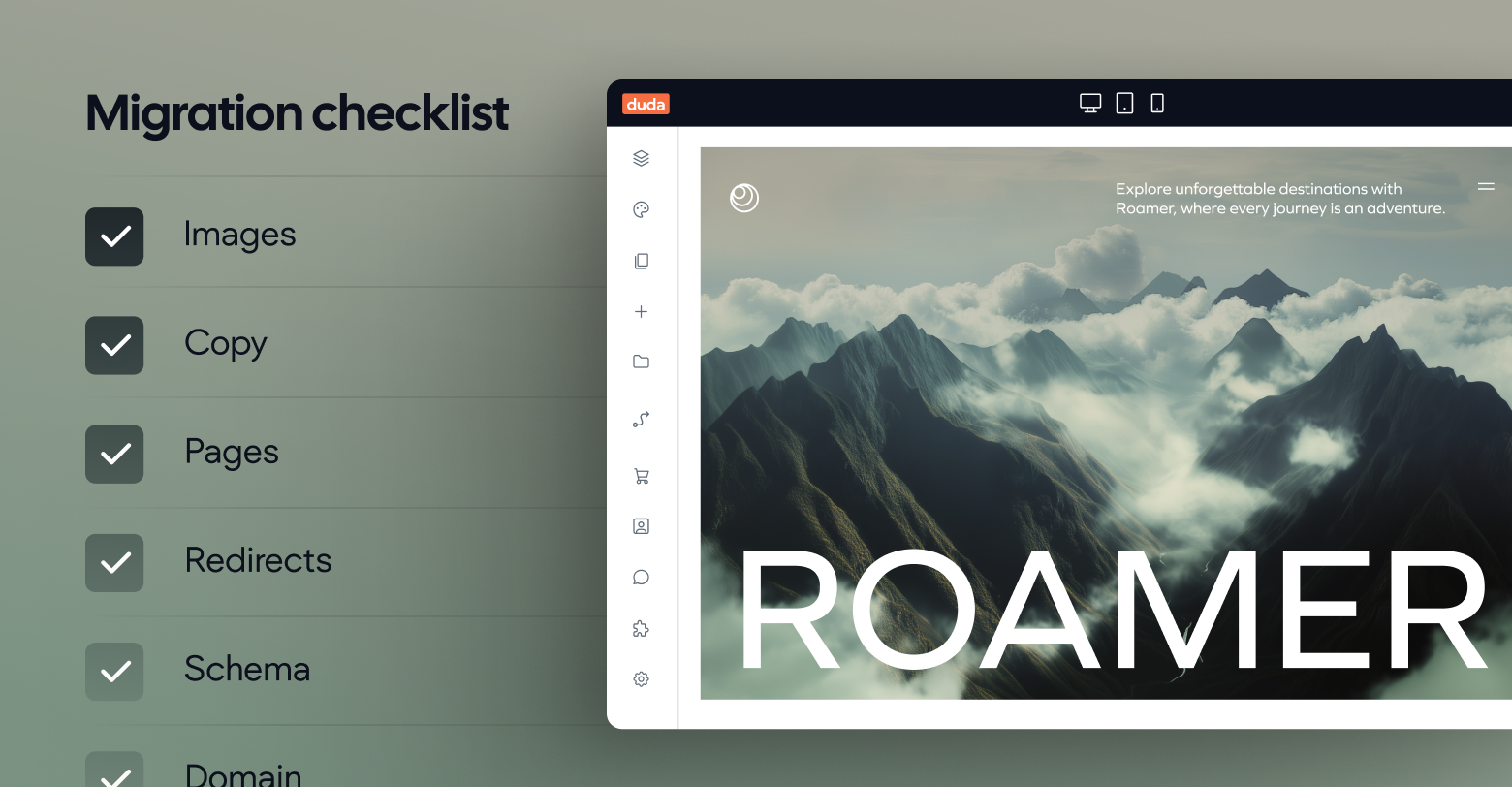Website migration, as the name implies, is the act of moving a website from one environment to another. Ask anyone who’s performed a migration before and they’ll likely agree, it’s a process much easier said than done.
There are a lot of moving parts involved with migrating a website. Small businesses rely on the visibility that their website brings them for new leads, meaning there’s a lot at stake. If your agency needs to migrate multiple websites, that only increases the complexity.
There’s more than one way to migrate a website, and which way you choose depends entirely on your own unique circumstances. That’s why the first step of any good migration is understanding why exactly we’re migrating in the first place, and what we want to accomplish.
Migration strategy
As much as we wish it was, migrating a website is by no means an instant process. Depending on your clients’ needs, and the number of sites you intend to migrate, your team could spend anywhere from a week to two months on this project.
That’s why it’s important to set expectations up front. Just about every modern website builder has a different philosophy behind of how they assemble the code of a website.
Take WordPress, for example, a popular website builder that uses “blocks” to assemble websites, much like how Duda uses “widgets.” There is a lot of overlap between blocks and widgets — for example, both platforms have a “audio” and “video” elements. However, WordPress also has “file” elements, where Duda instead allows any link, whether that be a text or a button widget, to point to a file.
If you were migrating a website from WordPress to Duda, you could easily translate the file block into a Duda equivalent. However, not everything will be so easily translated.
Finding where these gaps lie is a crucial step towards understanding just how faithfully your clients’ sites can be migrated.
Keep in mind, though, that most small businesses sites are going to migrate seamlessly between any two website builders. However, the experience of managing that site will be quite different.
That’s why it’s crucial to understand exactly *why* you’re migrating websites. Is this a new client from an old agency, or an existing client on an outdated platform? Is their current platform no longer meeting their needs, or have other considerations forced them to switch platforms? Maybe you’re a software company migrating your clients sites on their behalf.
All of these scenarios require different communication approaches. Be sure to express the benefits of their new website builder, like high-performance and leading
Core Web Vitals.
Manual migration
Manually migrating a client’s site is by far the most labor intensive way to do it, but for most agencies it’s also the best option. This is especially appealing if you’re only moving one or two websites to Duda at a time.
In manual migrations, members of your team, or a third-party service (more on that later), transfer all content to a new Duda website then make design adjustments as necessary.
Your team would use the existing website as a design reference, while working to faithfully recreate it within the Duda editor.
Fast migration
For large agencies and SaaS companies, Duda is capable of assisting with the migration process via a variety of methods.
One option, referred to as Fast Migration, uses a bespoke plugin to directly copy code from a platform to Duda, bypassing all of Duda’s formatting and markup language.
While this is fantastic from a speed perspective, it comes at an expensive. Sites transferred via Fast Migration cannot benefit from many of Duda’s features, including the visual editor itself. Instead, changes must be made in “Developer Mode.”
This is an ideal situation for platforms that need speed above all else, and are willing to deal with the compromises.
To better understand all migration options available to you, consider booking some time with
the Sales team. They’ll have the most up-to-date information for your unique situation.
Outsourcing migration
For agencies looking to acquire clients fast with limited resources, outsourcing is a great, but underutilized, option. Fulfillment providers can extend the capacity of your team by manually migrating the sites you need transferred.
You can find a variety professionals in our own
Duda Experts program that are more than ready to tackle your project.
Which option is right for you?
Switching website builders isn’t for the faint of heart, but, thankfully, we’re here to help you every step of the way.
If you’re building out that new site by hand, Duda’s responsive templates and AI Page Builder can help accelerate the process.
Agencies and SaaS companies looking to transfer a large number of sites at once can depend on the expertise of our team to guide them along on their journey. We’ve helped migrate thousands of websites from legacy platforms to our award-winning responsive website builder, and we’d be more than happy to do that for you as well.
For a more in-between option, consider hiring an expert. There’s a lot of benefit to outsourcing projects like this. While they deal with the monotony of site migration, your team can focus on acquiring new clients or satisfying existing ones.
Whatever you decide, you can rest easy knowing that switching was the right choice.







